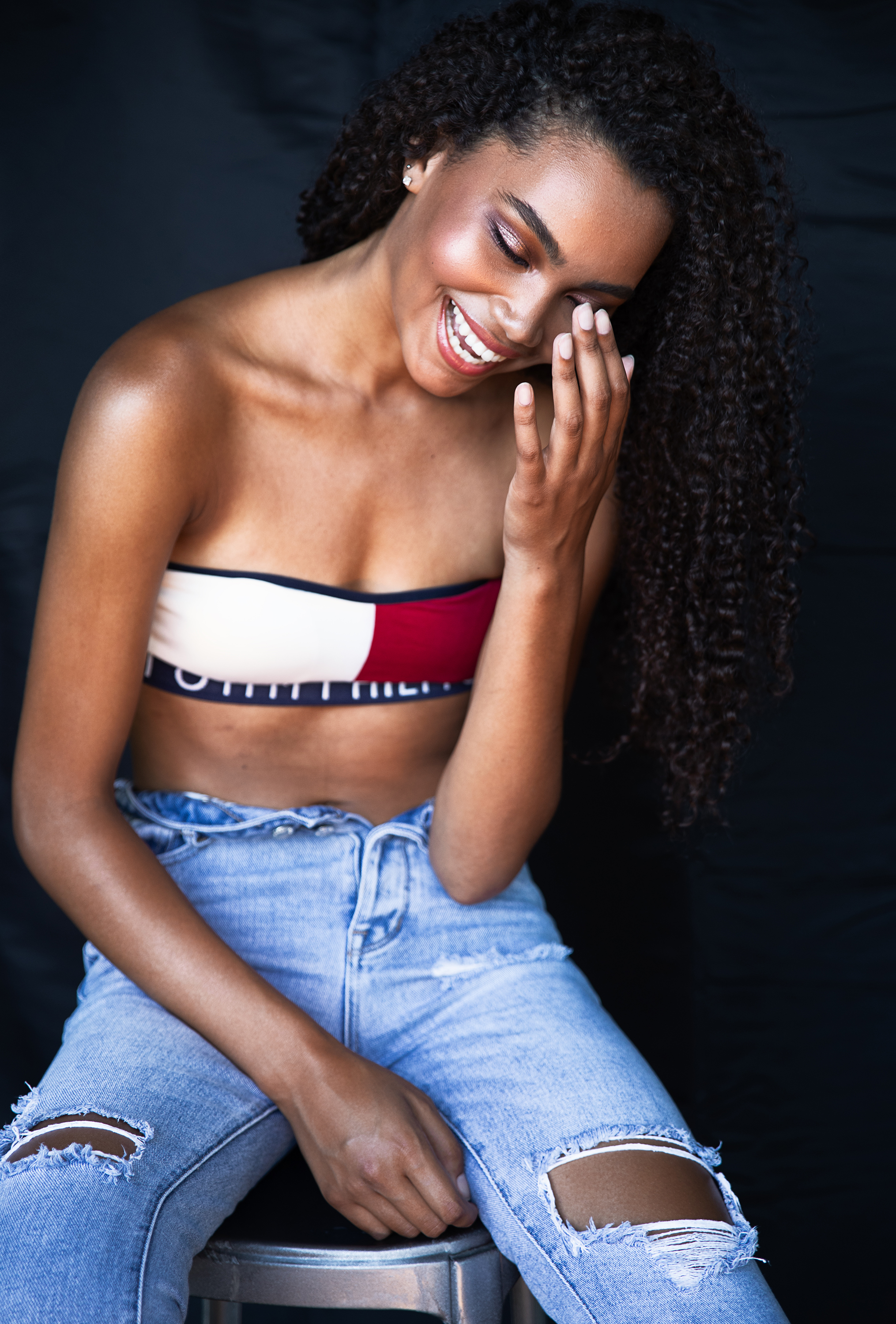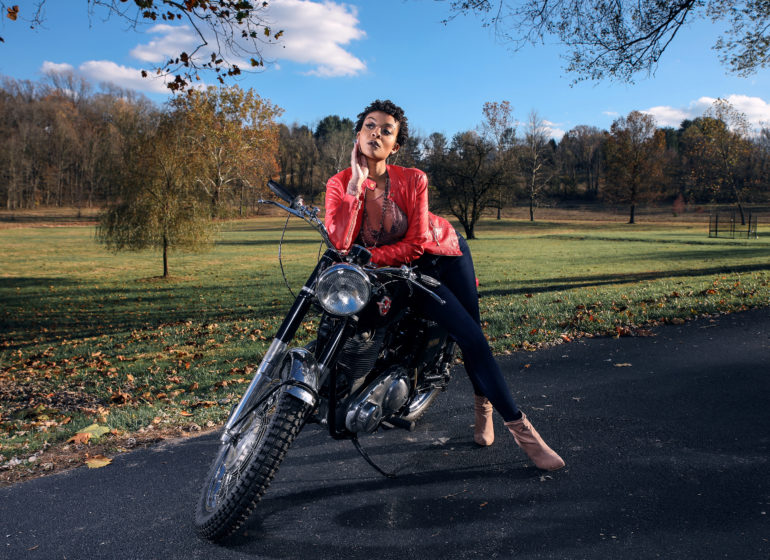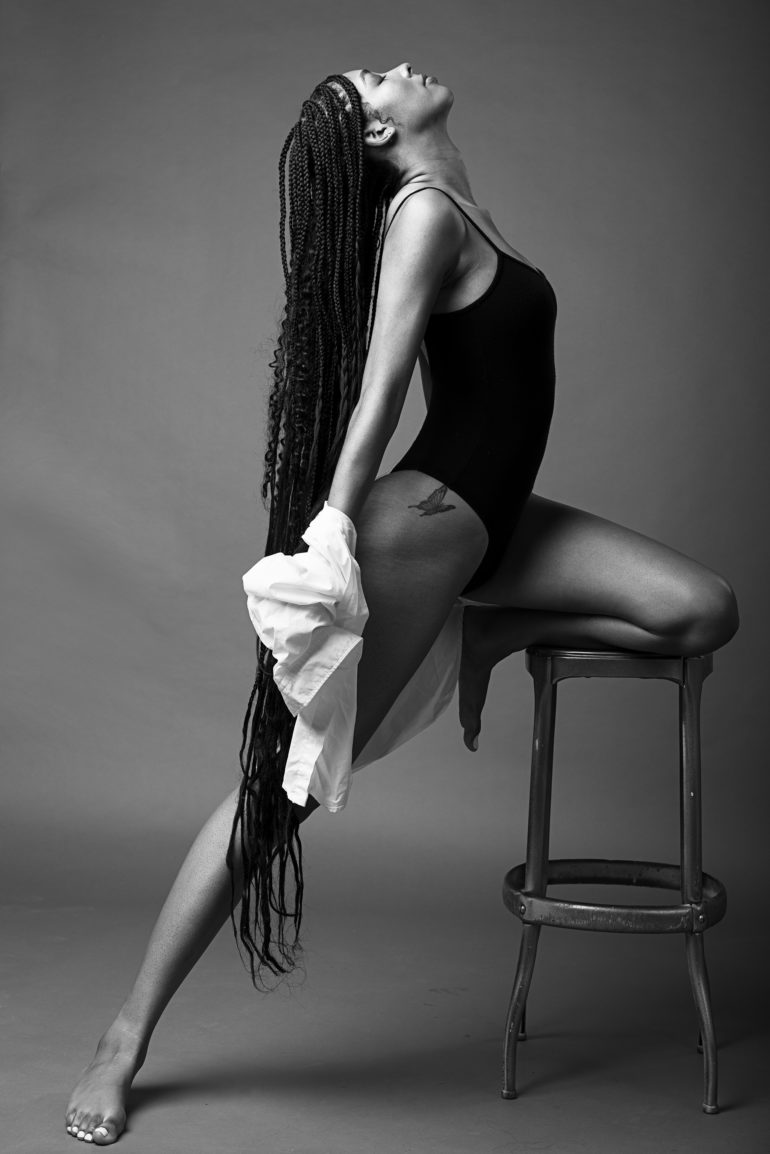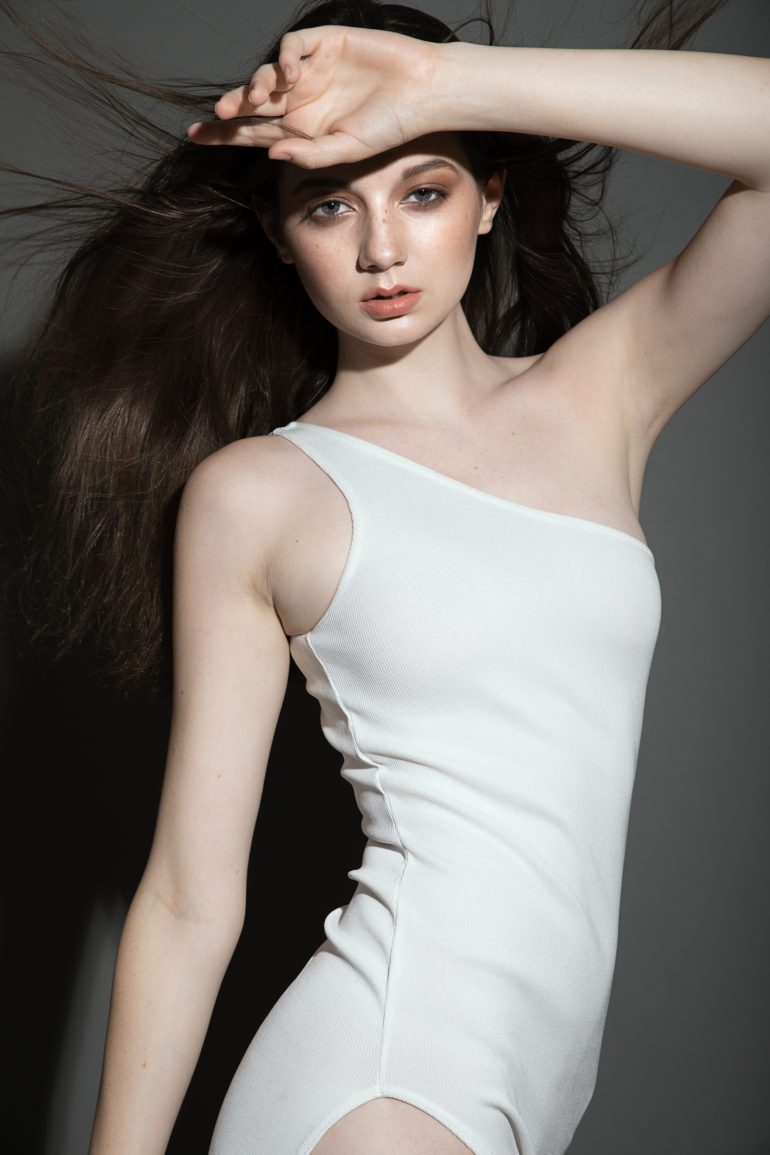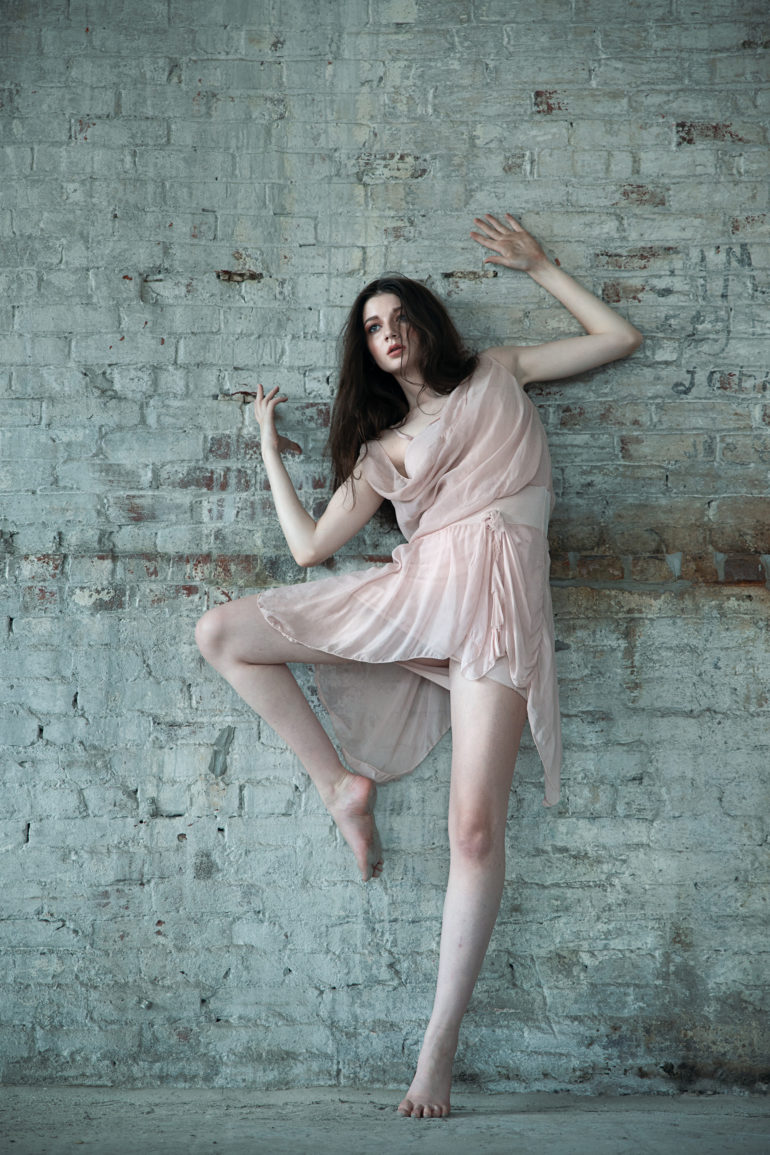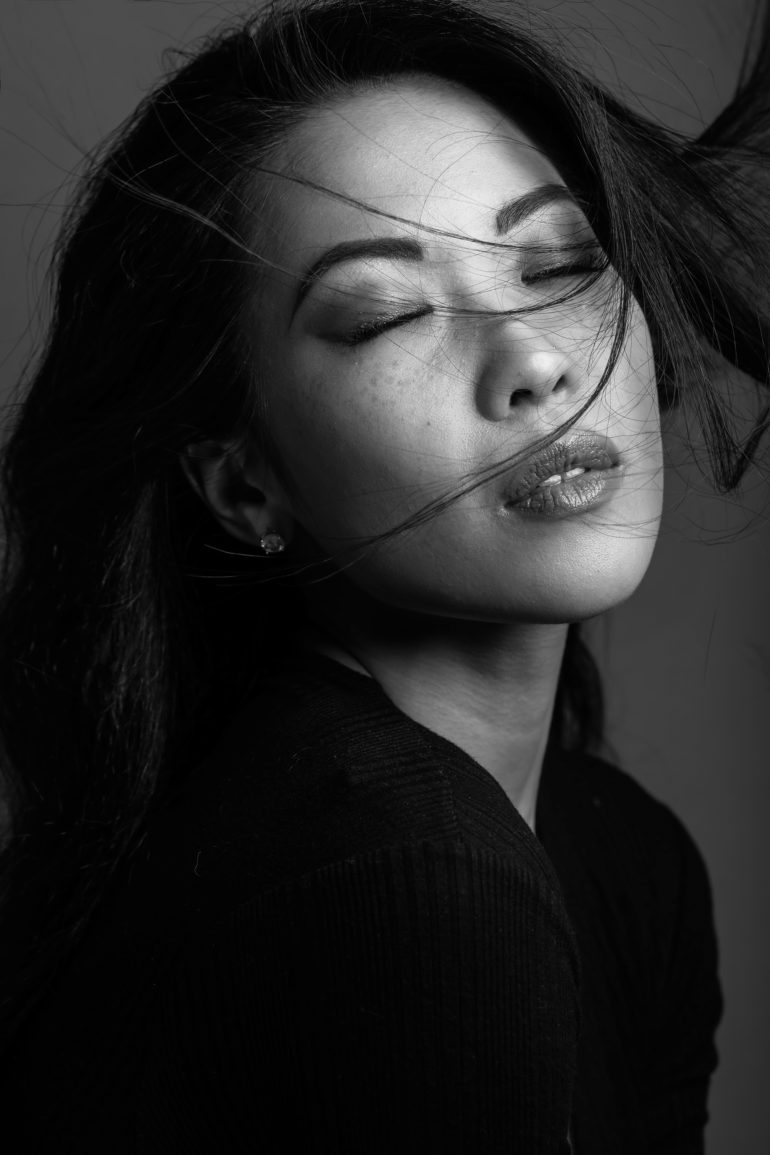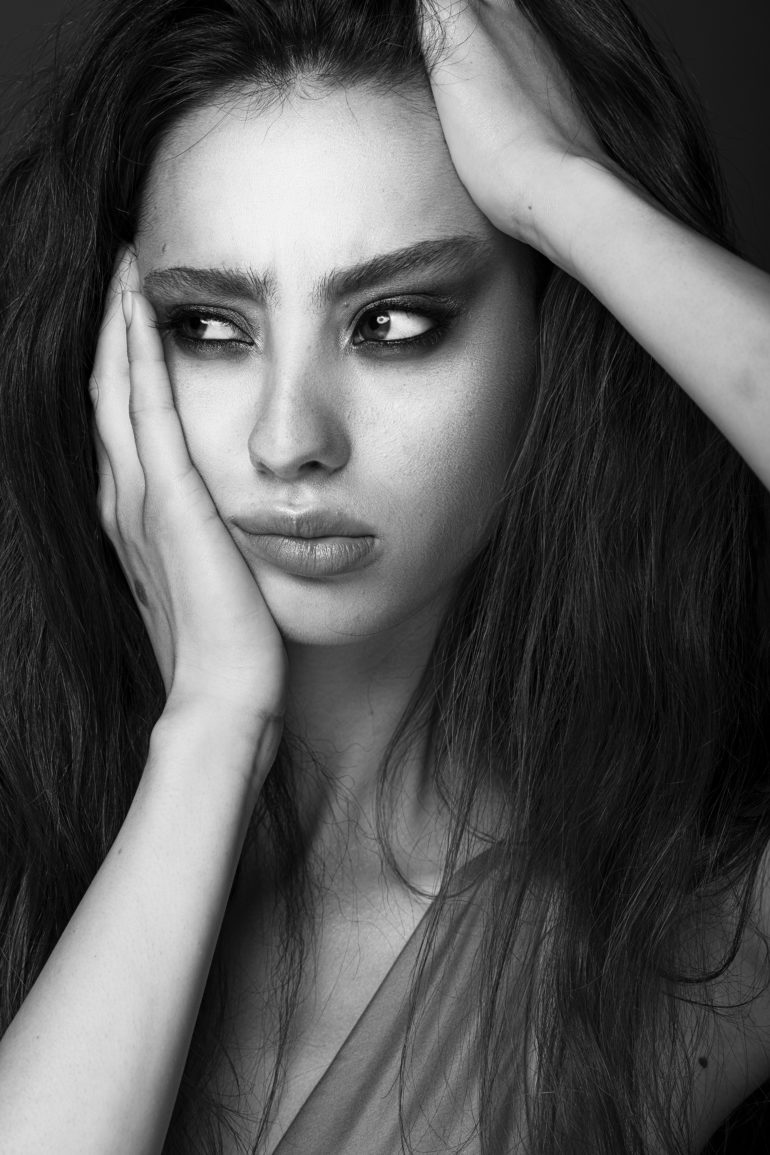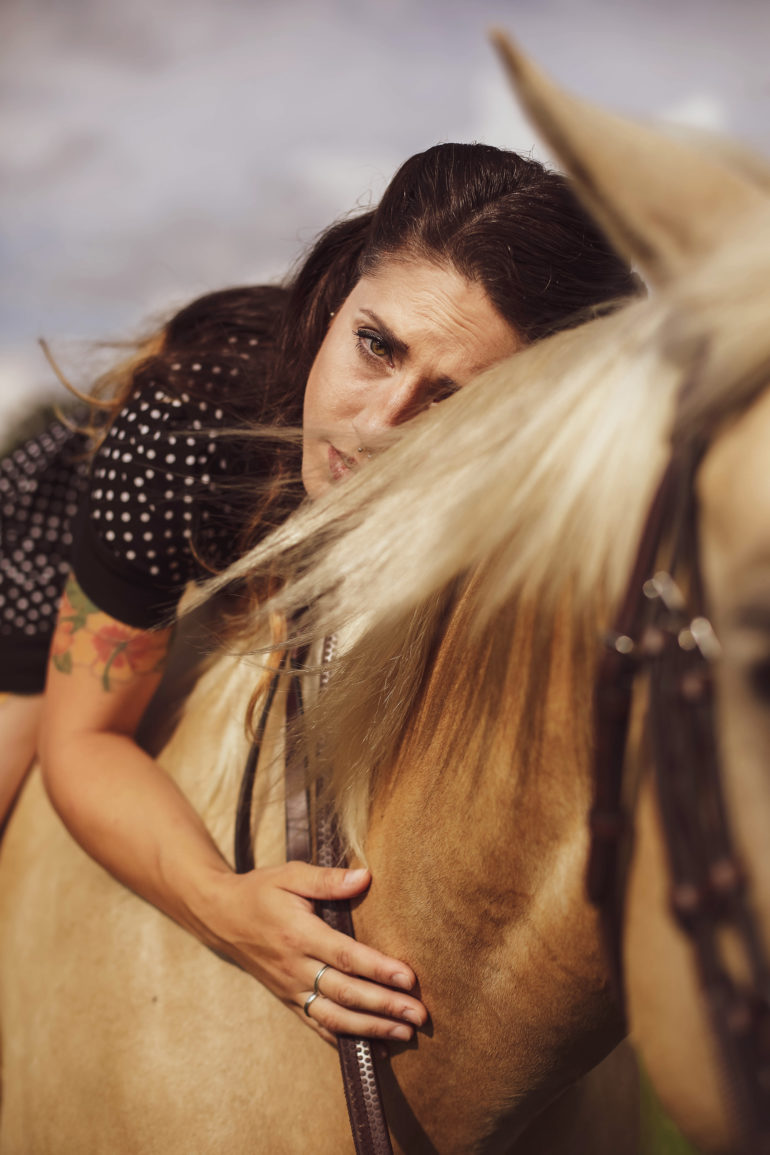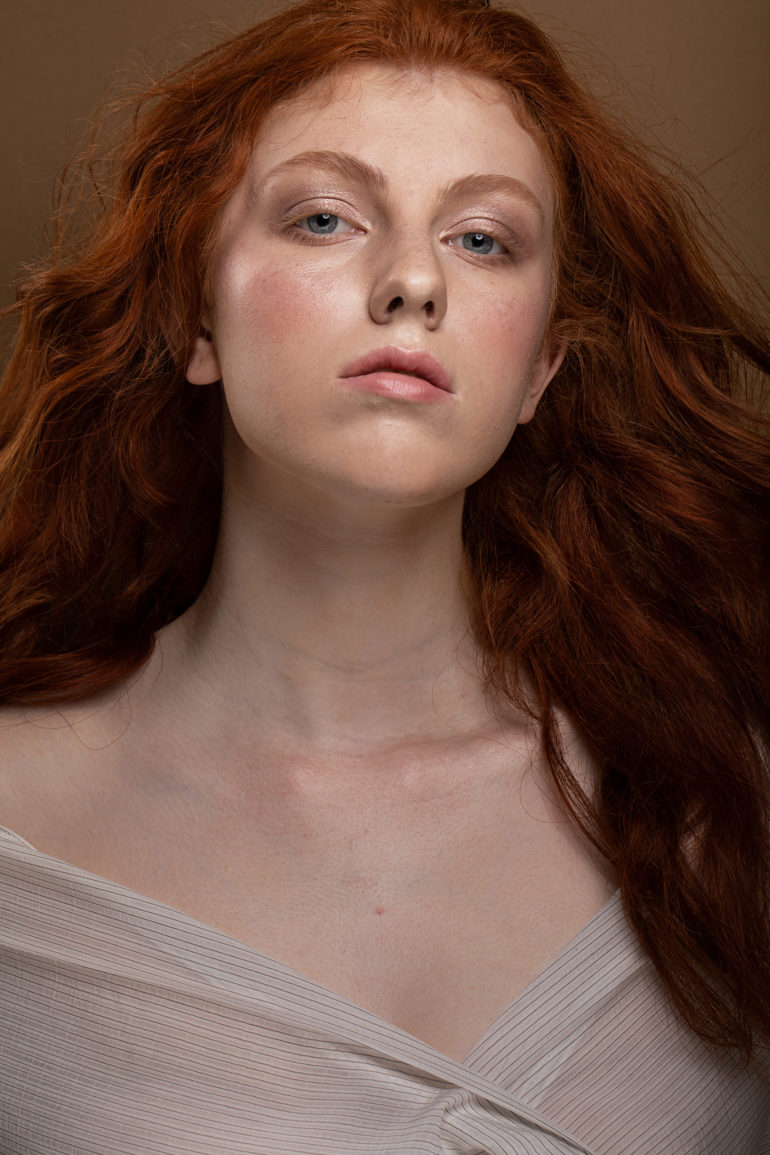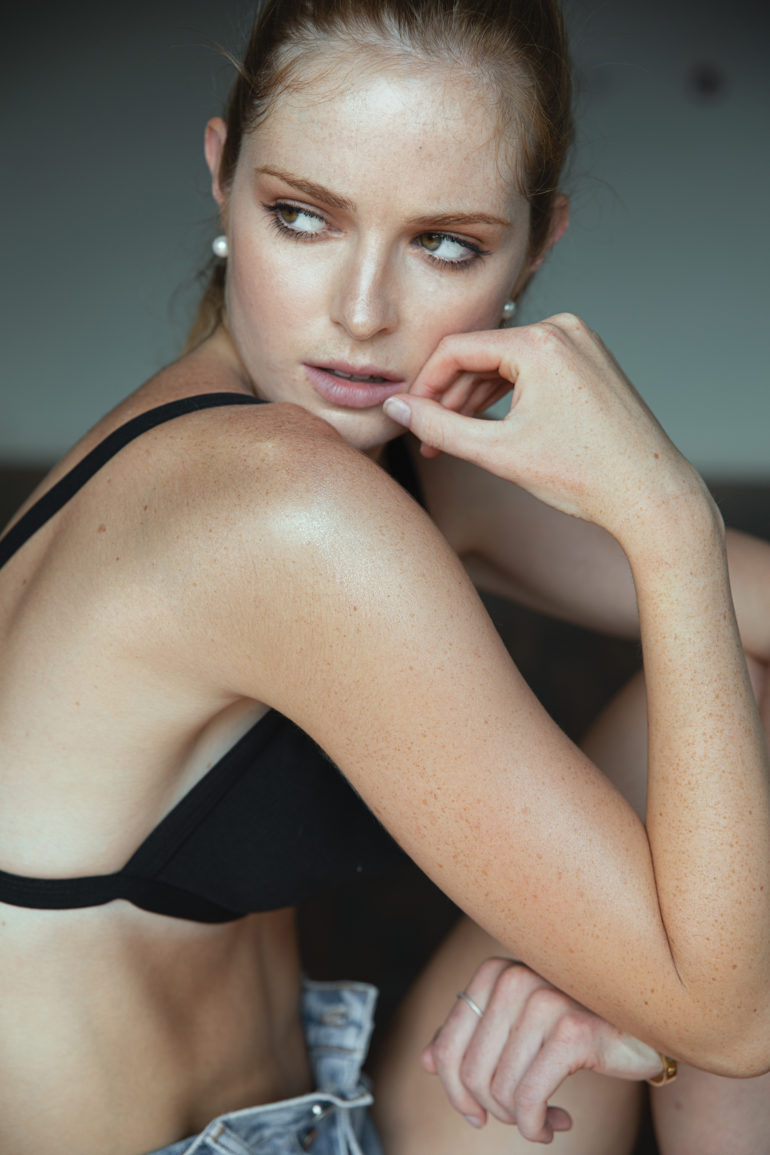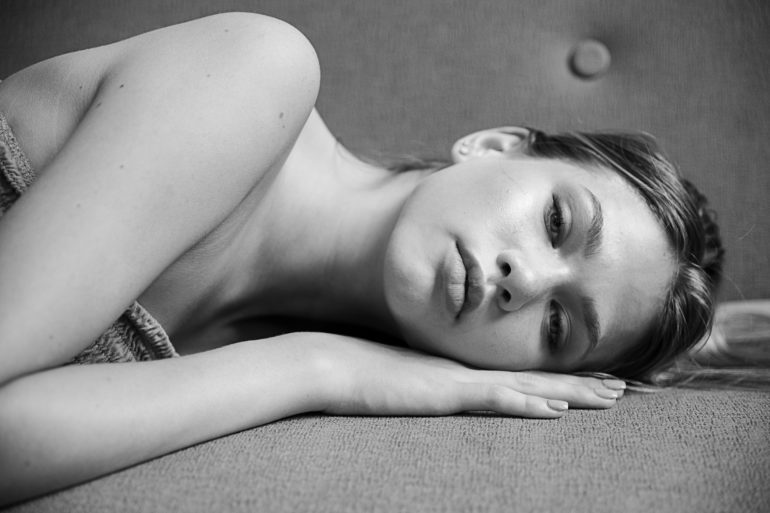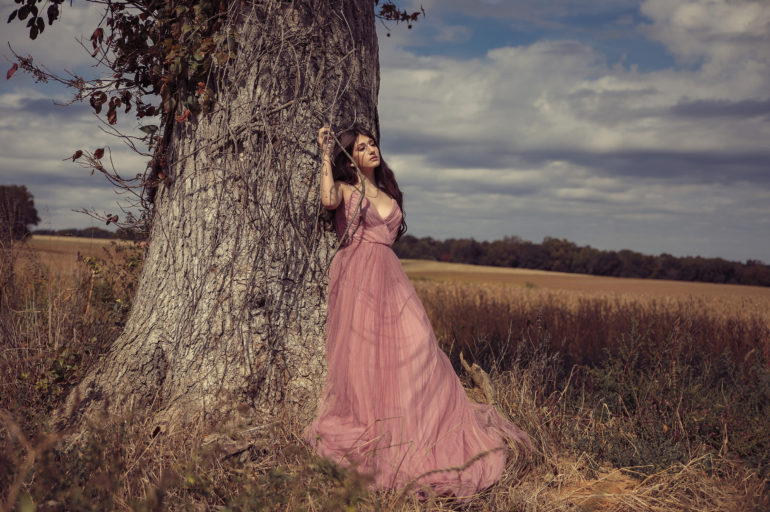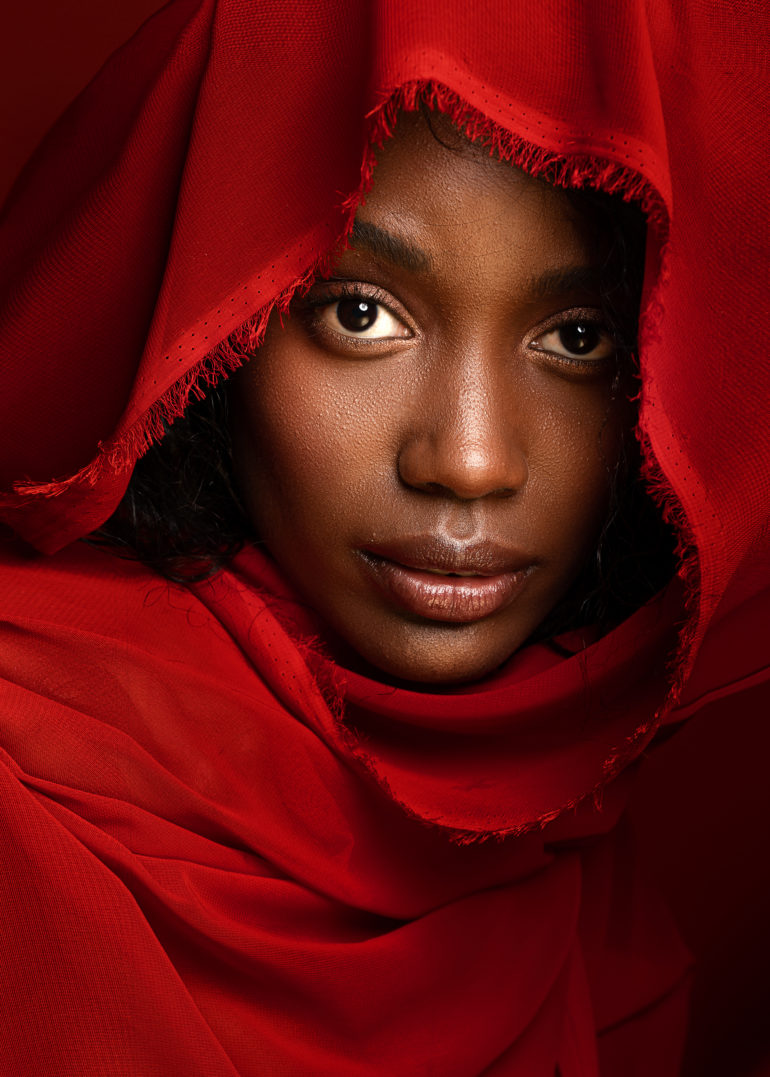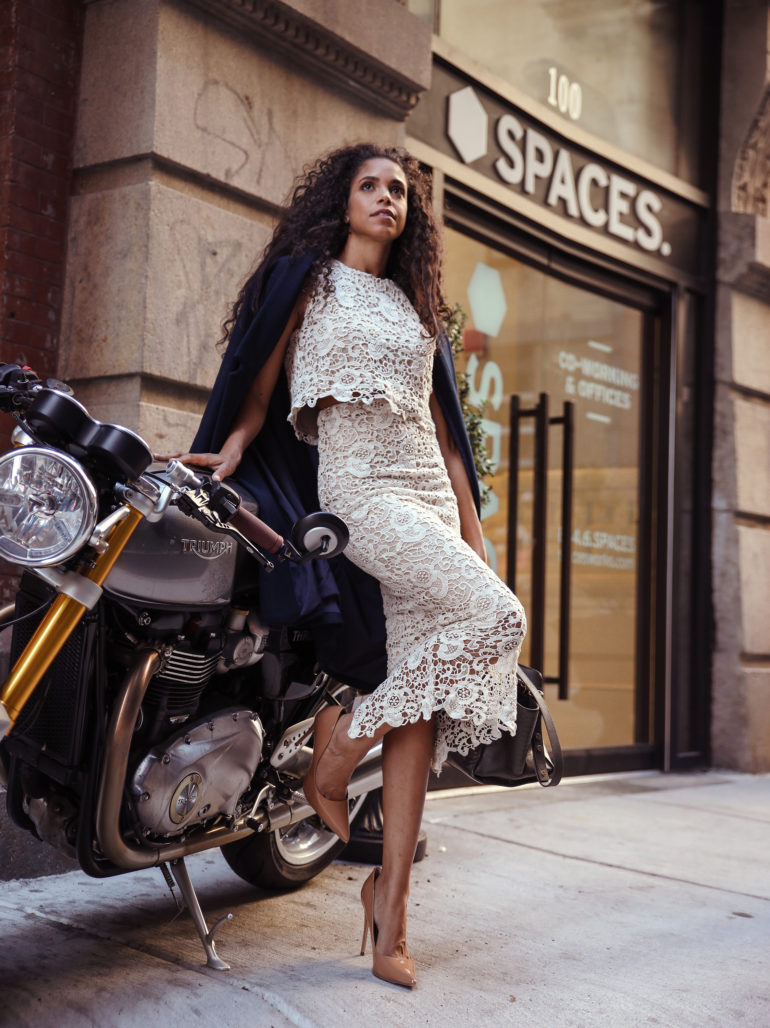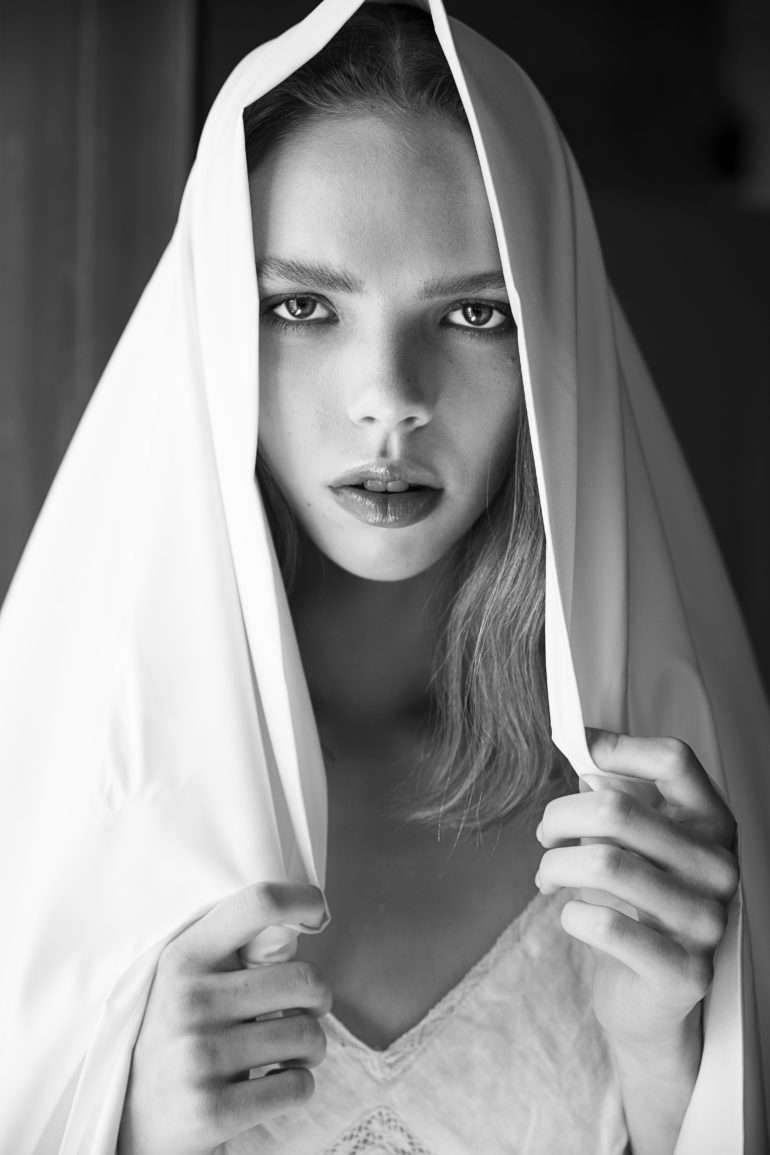Last Updated on 07/30/2020 by Mark Beckenbach
All images by Shanyn Fiske. Used with Permission. Be sure to follow her on Instagram.
“I agree with Eliott Erwitt’s idea that black and white photography is interpretive,” says fashion photographer Shanyn Fiske. “I do think of photography as interpretation, and monochrome most easily lends itself to that goal, especially when I’m trying to capture an emotion or a fleeting thought.” Shanyn doesn’t describe herself as a typical fashion photographer. She’s a late bloomer. She came from the academic world and adores the study around paintings, photography and literature. What’s more, Shanyn is working to try to change the ideals of what the fashion photography world is all about. She joins the fight with many other women and POC to get the word across, and during my time supporting it, I don’t think I’ve ever heard anyone put it as eloquently and plainly as Shanyn does.
“I’m 45 years old. I’m a petite Asian woman. I don’t fit the mold of the fashion photographer in this country in any way, shape, or form. I’m not young. I’m not European. I’m not male. I feel like all of these aspects of my basic identity work against me in terms of finding a place in an industry that has traditionally valued youth and has located Asian women primarily in the position of the model or the object of the gaze.”
Shanyn Fiske’s Essential Photography Gear
Shanyn says:
My gear is pretty basic. I shoot with two Canon 5D Mark IV bodies that go with me everywhere. I’ve been shooting mostly in my studio since last October, and my go-to lenses are my Tamron 24-70mm 2.8 and my Canon 100mm 2.8L macro. Last summer, I was frequently shooting on-location out at horse farms, and I was using my Canon 50mm 1.4 and my Canon 85mm 1.8 quite a bit, but I haven’t taken them out of my bag for a while. My mom – who got me into photography – has always been a Canon shooter, and when I started out, I inherited her old cameras and lenses. She swears by Canon, and I’ve never shot with anything else. I’m a creature of habit, I guess. Once I find something that works, I tend to stick with it, and the Mark IV has never let me down. Also, as a single mom with a kid in private school, I’m on a budget so I don’t have the luxury of being too much of a gearhead. The 100mm was a recent splurge as I’ve started to explore some beauty photography.
Phoblographer: Talk to us about how you got into photography.
Shanyn: My mom is a photographer. She and my biological father had a darkroom in the house in Beijing where I grew up. He is a film actor, and I think their mutual love of image-making was what brought them together. My mom’s interest in photography has always been a factor in my life, but I never paid much conscious attention to it. It was not until I started modeling a little when I was in my 30s that I became fascinated with photography myself. A couple years after I quit modeling, my mom was looking to rehome her old DSLR, so I took it and decided to learn how to use it. I was hooked as soon as I took my first picture. I guess it’s in my genes.
“I love Peter Lindbergh’s work and respect him as a person and artist, and I think about this quote of his a lot – ‘photographers are responsible for creating or reflecting an image of women in society.’ If that is the case and if most of the fashion photographers working in the upper ranks now are white men, what does this say about our definitions of womanhood and who we allow to shape that identity?”
Phoblographer: What made you want to get into portraiture and fashion work?
Shanyn: The relationship between a model and a photographer intrigues me. For me, that relationship constitutes a process of collaborative storytelling. I was never comfortable being in the model role of that collaboration and didn’t feel any kind fulfillment as a model. It wasn’t until I became a photographer that I realized I could enter the process more fully from behind the lens. I’ve been a writer and a storyteller all my life as well as a keen observer of the human condition. I’m fascinated by people and their narratives. For me, portrait photography is a way of listening and interpreting the stories that people have to tell through their expressions and their bodies. The process of photographing a portrait is always one of discovery for me. In the best cases, that process is one of discovery for the model / subject as well because maybe I’ve managed to capture some aspect of their stories that they themselves were not aware of or hadn’t perceived previous to the shoot. Photographing an editorial or fashion campaign is a bit different because the narrative needs to fit the outlines dictated by the clothing / product, but the elements of mutual storytelling and discovery are still essential. In short, what draws me to portrait and fashion photography is always this mutually-constructed process of storytelling and narrative discovery.
“A couple years after I quit modeling, my mom was looking to rehome her old DSLR, so I took it and decided to learn how to use it. I was hooked as soon as I took my first picture. I guess it’s in my genes.”
Phoblographer: You describe yourself as a late bloomer with photography. From speaking with other photographers who consider themselves to be the same, do you feel like there’s internal pressure to push yourself harder, or that you’re more renewed and impassioned with vigor?
Shanyn: Oh yes. I’m 45 years old. I’m a petite Asian woman. I don’t fit the mold of the fashion photographer in this country in any way, shape, or form. I’m not young. I’m not European. I’m not male. I feel like all of these aspects of my basic identity work against me in terms of finding a place in an industry that has traditionally valued youth and has located Asian women primarily in the position of the model or the object of the gaze. In trying to become a successful fashion photographer as an older, Asian woman, I do feel that I’m trying to turn that tradition on its head. But I’ve spent my entire life being underestimated, so that’s a position where I feel very comfortable. I immigrated to this country from China when I was 7 years old, and I was raised by a single, immigrant mother. I’ve always had the mentality that I need to work twice as hard and be twice as good to be considered equal. I don’t mind that. I work best when I’m presented with a challenge.
“Perhaps what makes me unique is precisely the fact that I strive more for discourse than idiosyncrasy.”
Phoblographer: How do you describe your creative vision based on your photographic identity? Who or what do you think has influenced this?
Shanyn: My vision as an artist is continually evolving and responding to the things I perceive around me as well as drawing from my history. I have spent my career in academia, specializing in Victorian and Modernist literature and culture (with a splash of Ancient Greek study), and the images and ideas that have populated my research, writing, and teaching continually bleed into my work. For instance, I was photographing an editorial out in a soy field last fall, and the colors and general atmosphere started to remind me of Pre-Raphaelite paintings. A couple of the photographs from that shoot turned out like modern-day recreations of a John William Waterhouse painting. It was unintentional, but the resonance is apparent in the photographs. Similarly, I was photographing a model this winter in my studio, and she was wearing this long, black, velvet dress. In the middle of the shoot, John Singer Sargent’s portrait of Madame X appeared in the frame. It’s nice to have a mental library of images to inform my work.
I’m a bit of a skeptic about originality. Perhaps because I’m a historian, I think any narrative we choose to tell in the present is shaped, consciously or subconsciously, by a history of narratives that came before the present moment. I think this history makes creativity all the richer. I’m very aware of the writers and artists that have shaped me and the ways I perceive the world, and it actually gives me great pleasure to see my photographs in some way embody and build on that history.
In terms of specific photographic influences, I’m very drawn to the works of Julia Margaret Cameron, Sally Mann, and Peter Lindbergh, and I consider myself a student of their artistry. I think there’s an emotionality and depth to their works that I’m always trying to emulate in some way in my photography.
“But I’ve spent my entire life being underestimated, so that’s a position where I feel very comfortable.”
Phoblographer: What makes you and your work so particular and stand out from the rest?
Shanyn: I’ve spent the past three decades as a professional writer, so words are my natural medium and my reference point. I tend to use photography as a kind of language, and I see my photographs as entering into (or attempting to enter into) a dialogue with the people and things to which my practice is responding. Perhaps what makes me unique is precisely the fact that I strive more for discourse than idiosyncrasy.
Phoblographer: What are your thoughts on the latest breed of photographers who shoot to satisfy an Instagram algorithm rather than working to create actual diversity and innovation in the arts? Do you believe that it’s sometimes stifled?
Shanyn: I don’t actually understand Instagram that well, I’m embarrassed to say, and I don’t even know how I would shoot to satisfy an algorithm. I post a lot on Instagram just to get my work out there and – to be honest – posting a photo gives me a break from a long editing session. I do hear about people being calculating about when they post and how they arrange their tiles and whatnot. I should probably be much more calculating about it, but I’d rather spend whatever free time I have in shooting and editing. I just put out my best work and hope people enjoy it. I know that sounds simplistic, but it’s the truth. I value authenticity more than algorithms.
“For instance, I was photographing an editorial out in a soy field last fall, and the colors and general atmosphere started to remind me of Pre-Raphaelite paintings. A couple of the photographs from that shoot turned out like modern-day recreations of a John William Waterhouse painting.”
Phoblographer: What are your thoughts on colors? You have a fair amount of black and white work and you seem to work a lot with muted and neutral tones. Do you feel like there’s been a particular part of your training that molded this?
Shanyn: I do think my obsession with photographers like Cameron and Mann and Lindbergh has made me gravitate toward black and white. I agree with Eliott Erwitt’s idea that black and white photography is interpretive. I do think of photography as interpretation, and monochrome most easily lends itself to that goal, especially when I’m trying to capture an emotion or a fleeting thought. I feel like if you’re going to use color, it needs to be deliberate and meaningful in the way that a painter chooses his palette. I’ve actually been playing with colors more lately – buying swaths of fabric to play with. I feel like I need to develop a relationship with every color specifically, not just colors in general. I think a lot about Toni Morrison’s novel Beloved (probably one of the most influential books in my life), and how her character Baby Suggs spends time contemplating every color in turn. I want to devote the same amount of care and consideration to color. That might be a lifetime’s work.
“I love collecting old issues of Vogue magazine to page through and regularly scan Ebay for stacks of old fashion magazines.”
Phoblographer: We’re obviously amidst COVID 19 right now. So, how have you been adapting as a creative? What’s the toughest part?
Shanyn: The COVID shutdown happened just as I was starting to get a steady stream of work and my studio was starting to be able to pay for itself. Like many photographers, I didn’t go into my studio for a good two months. When Philadelphia went into the “green” zone, I started slowly shooting again. Masks are required in the building where I have my studio, and I’m careful about maintaining a 6’ distance from models I shoot. I also have very small sets – usually just the model, myself, and my makeup artist, and I have sanitizer and disinfectant all over the place in my studio. I’m lucky that I don’t have to make a living as a photographer, but I’m bracing for the next shutdown, which I feel is probably inevitable given the way things are going right now.
Phoblographer: What are your favorite magazines or photo books to page through? Where do you typically get inspiration from? Behance? Pinterest? Instagram? Tumblr?
Shanyn: I get inspiration from a lot of places, not just from visual sources. I love the process of translating an idea from something I’ve read or seen out in my day or experienced into a photograph. For example, I have a 13-year-old son, and I’ve been thinking a lot about the process of growing up and what it means to experiment with different aspects of identity in order to create a unique and authentic self. When I photograph models who are in their teenage years, I’m sure the photographs I create are influenced by these questions of identity. A photograph can be so magical in its ability to crystallize a thought or a question – to give shape and tangibility to something ephemeral or frustratingly abstract. I feel like so many of my photographs are imagistic expressions of questions I’ve been asking myself or problems I’ve been trying to work through.
I also spent the past decade of my life as a semi-professional rider (of horses). Up until about two years ago, I was riding 5-6 horses a day, 5 days a week, and working out at horse farms. Even though most of my images now don’t include horses, my connection with animals and nature is deeply engrained in me, and I always look to the natural world for inspiration.
In terms of visual inspiration, I love collecting old issues of Vogue magazine to page through and regularly scan Ebay for stacks of old fashion magazines. I also have an extensive collection of the magazine Black and White (also found on Ebay). All of my mood boards are built on Pinterest.
Phoblographer: I probably can’t relate to this, so please forgive me beforehand, and please help me and the viewers understand the world through your lens. Do you feel that both age and your background play into your entry to the photo world? Do you mind telling us a bit about this? What are some constant worries of yours that you wish weren’t there?
Shanyn: I don’t think there’s a single day in the studio that I don’t feel deeply and self-consciously that I’m a middle-aged, brown woman in a field that is dominated by white men. I’ve had models turn their noses up at working with me because I don’t fit the typical mold of a fashion photographer. I’ve had people tell me that success in the industry is based on the quality of your work and not on your gender or ethnicity or connections. But I strongly disagree with that or, rather, I feel that is the perspective of someone who has not experienced the obstacles of being an artist of color trying to break into the industry. You only have to look at the artists being represented by the top art agencies now. Their boards are dominated by white, male artists. You really have to search to find a female, Asian fashion photographer on the board of a major art agency. Is that really because there are no female, Asian fashion photographers out there worthy of representation? I think recent events and protests have made agencies and the industry as a whole re-examine their practices and the prejudices that are apparent in their representation choices. I’m not convinced that this examination will yield real change but I understand that the arc of justice is long. So, yes, I do feel that my age and gender and ethnicity are all challenges in terms of where I want this career to go. But, as I mentioned before, I enjoy a good challenge, and I would love to be one of those artists that helps to break down some barriers to success for POC artists in general and Asian women in particular.
“I’ve had people tell me that success in the industry is based on the quality of your work and not on your gender or ethnicity or connections. But I strongly disagree with that or, rather, I feel that is the perspective of someone who has not experienced the obstacles of being an artist of color trying to break into the industry.”
Phoblographer: You came from the academic world. What skills did you bring from there into the photographic arts? How have they helped?
Shanyn: To expand a bit – I think academia has made me appreciate the importance of narrative and of a self-conscious process of creation. It has made me think deeply about how my photography links to tradition in all branches of the arts – from photography to painting to literature and other fields. More than anything, it has made me conscious of the burden photography must bear as an instrument of social change. I’m getting ready to teach a graduate class this summer called “Human Rights and Social Justice in Image and Text,” where we will be talking precisely about this idea – how photography has played a role in the work of social justice in this country. As an academic, I’ve become very comfortable with asking difficult questions and with using creativity as a tool for enacting meaningful social change. To some extent, my photography is an extension of the work I’ve been doing all my life.
Phoblographer: One of the reasons why I steered towards the tech side of the photography world is because I’ve always felt it was easier for me as a South Asian man. In terms of modern feminism, how much work do you think the photo industry has to do? What are some of the biggest issues to you? What are your personal feelings on all of it?
Shanyn: Oh wow. This is huge. As a feminist scholar, I feel like I could write a book about this. But I’ll try to be as brief and pointed as I can here. I think the traditional dynamic in fashion photography has always been: woman as photographic subject and man as photographer. Everyone in the industry – from models to photographers to agents – buys into and feeds this mythology. This industry has been a key player in reinforcing the idea that femininity or womanhood is defined by the male gaze. I love Peter Lindbergh’s work and respect him as a person and artist, and I think about this quote of his a lot – “photographers are responsible for creating or reflecting an image of women in society.” If that is the case and if most of the fashion photographers working in the upper ranks now are white men, what does this say about our definitions of womanhood and who we allow to shape that identity? Are we, as a society, ok with womanhood being defined predominantly by white men? To put it bluntly, if we really believe in the central tenet of feminism that women need to define themselves and be the authors of their own identities, then we need more female photographers. And I think this is going to be a challenge because, for so long, the fashion industry has been extremely protective of the male gaze to the extent that many female models don’t feel they have arrived until they have been shot by the white, male photographer of the moment. To have been shot by a Peter Lindbergh or a Helmut Newton has and continues to be an epitome of achievement. That’s not just a testament to artistic skill. That’s also a reification of a tradition that has policed the gaze and commodified female sexuality to the extent that women don’t feel validated until they have been subjected to, judged, and affirmed by the white male gaze. I think it’s ironic that even when we have ad campaigns featuring strong female models and role models, quite often the images in those campaigns are captured and shaped by white male photographers. I want to see women’s strength and images of women’s resilience captured by and shaped by women. What would that look like? How could that fundamentally change the way that women relate to each other, themselves, and the world? That idea excites me.
“As an academic, I’ve become very comfortable with asking difficult questions and with using creativity as a tool for enacting meaningful social change. To some extent, my photography is an extension of the work I’ve been doing all my life.”
I think about this idea of policing in terms of racial diversity as well. In preparation for my class this summer, I recently read an article about photographs of lynching. It was not long ago that a black man could be killed for looking at a white woman in this country. Although that seems appalling now, I’m reminded that 2018 was the first time in Vogue USA’s history that a black, male photographer shot its cover, and this was only at the insistence of Beyonce, who was the subject of the cover. Facts like this suggest to me that the photography industry has a long way to go in terms of racial and gender equality. It is not enough to highlight diversity amongst models and subjects of photographs. It is also essential that the team in charge of creating the image is also diverse.
“Are we, as a society, ok with womanhood being defined predominantly by white men? To put it bluntly, if we really believe in the central tenet of feminism that women need to define themselves and be the authors of their own identities, then we need more female photographers. And I think this is going to be a challenge because, for so long, the fashion industry has been extremely protective of the male gaze to the extent that many female models don’t feel they have arrived until they have been shot by the white, male photographer of the moment.”
Phoblographer: What are your goals for the rest of the year as a creative? How do you plan on getting there?
Shanyn: I would love to be published in some bigger magazines this year. I’ve been published a number of smaller magazines, which has been great. But I’d like to aim for L’Officiel and Institute this year and some others. One of the key components to my ability to aim for these publications has been putting together a strong team. I now work with an amazing makeup artist who shares my visions, ambitions, and values, so I feel like we can achieve anything. I’ve gotten to work with some amazing talent from testing with different agencies, so I’m really looking forward to putting together some big editorials in the next few months.
As my earlier answers have probably indicated, one of my goals as a photographer is to be a voice for other POC artists and to discover / create platforms to increase visibility. As I continue to evolve as an artist, I want to look for these platforms, whether that be in the form of agency representation or magazine publication or fashion campaigns. I think the fashion photography world is headed toward real, meaningful change, and I’d like to play a part in that revolution.


